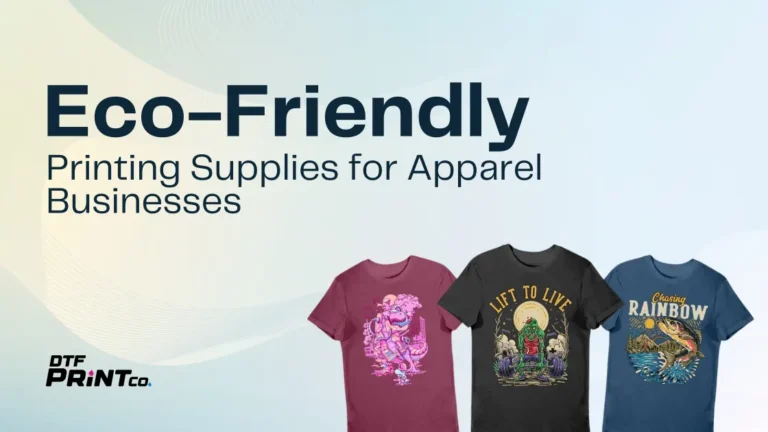DTF printing technology relies on a controlled combination of heat, adhesive powder, and film integrity. The curing oven is the component responsible for binding the ink with the powder and ensuring that the final transfer onto fabric is both clean and durable. However, the smallest misalignment in curing time, oven temperature, or airflow configuration can lead to disastrous results.
A properly calibrated oven ensures powder melting just enough to bond with the ink while maintaining film elasticity. When this balance is off, prints may peel, crack, or fail to transfer at all. According to industry experts at DTF Superstore, even a 10°F variation can impact the bond strength across the entire batch.
How Curing Temperature Damages Prints
Curing temperature is the most common factor behind print degradation. Excessive heat can burn the adhesive powder, resulting in a brittle print layer. On the flip side, insufficient heat causes incomplete bonding, which results in film lifting, powder flaking, or uneven color transfer during pressing.
Typical DTF ovens should maintain a curing range between 280°F to 320°F, depending on film thickness, humidity, and powder composition. Deviations outside this range often lead to:
- Film discoloration
- Cracked edges after transfer
- Sticky residue remaining on garments
This is especially problematic in regions with unstable power supplies or poorly insulated ovens. Manufacturers recommend using infrared thermometers or oven thermocouples to ensure thermal consistency throughout the chamber.
Signs That Your DTF Oven Is Miscalibrated
A miscalibrated DTF oven may not show obvious signs until prints begin failing. Some of the early indicators include:
- Sticky or wet feel on cured film
- Overly powdery back layer even after full cycle
- Visible bubbling or blistering during heat press
- Films curling at the edges before application
Such issues often stem from thermal dead zones, where specific regions in the oven fail to reach the necessary curing temperature. This typically results from:
- Clogged airflow vents
- Uneven infrared heat dispersion
- Uncalibrated digital thermostats
Technicians recommend performing oven mapping tests—placing thermal-sensitive stickers across a dummy film sheet to visually confirm temperature uniformity across the oven bed. Replacing faulty ceramic heaters or recalibrating the control board may be required if hot spots are detected.
What Over-Curing Does to Transfer Films
Over-curing happens when the film is exposed to heat longer than required, or at a higher temperature than the powder’s melt threshold. This process often:
- Causes ink layer hardening, making it brittle and prone to cracking during stretching
- Results in glossy or scorched finishes that signal powder breakdown
- Triggers adhesive pooling, where melted powder overflows beyond print borders
The result is a non-compliant transfer, especially when the design includes fine details or color gradients. Over-cured films are also more likely to stick prematurely to the pressing fabric, leading to ghosting or partial lifts.
According to All American Print Supply Co., prolonged exposure to curing ovens can reduce transfer success rate by over 30%, especially when using low-temp hot peel film
How Airflow Patterns Impact Curing Efficiency
One of the most overlooked aspects of DTF curing is the effect of air circulation inside the oven chamber. Improper airflow patterns can create thermal gradients, leading to overcured or undercured patches within the same batch of film. Unlike flat heat press surfaces, DTF ovens rely on forced convection to maintain uniform temperature distribution.
Signs of poor airflow balance include:
- Film sections turning tacky while others remain dry
- Non-uniform powder glossiness across print surfaces
- Localized wrinkling or curling after heat treatment
Most commercial curing ovens are equipped with built-in fans, designed to move hot air horizontally across the film surface. When these fans become obstructed or operate at mismatched speeds, air stagnation zones can develop, preventing consistent powder fusion.
To remedy this, manufacturers recommend:
- Cleaning intake vents bi-weekly
- Inspecting fan blades for residue buildup
- Verifying fan RPM through internal diagnostics
- Replacing uneven heating elements if thermal tests show irregularities
You can learn more about airflow diagnostics from equipment specialists at DTF Station.
How Uneven Powder Distribution Worsens Curing Results
DTF adhesive powder, which melts to bind the ink to the film and later to fabric, must be applied evenly before the curing process. Unfortunately, many operators unknowingly over-powder or under-powder their transfers, triggering inconsistent results even in well-calibrated ovens.
Over-powdering effects:
- Excess adhesive melts into sticky puddles
- Creates a raised print edge or “halo effect”
- Leaves behind powder smoke residue on oven walls
Under-powdering effects:
- Results in ink lift during film peeling
- Causes incomplete transfer bonding
- Reduces wash durability of finished garments
Operators using manual powder shakers are especially at risk of poor distribution. Upgrading to automated powder shakers with vibrating trays ensures uniform layering of powder, which cures more evenly and reduces material waste.
Additionally, be cautious about powder particle size. Fine powder may disperse more smoothly but is prone to airborne clumping, especially in humid rooms. Coarse powders require longer curing times and higher temperatures, introducing more variables that need close monitoring.
Humidity, Room Temperature, and Environmental Factors
Environmental variables like ambient humidity and room temperature can sabotage even the most perfectly set DTF curing oven. Moisture absorption by both the film and powder prior to curing increases the risk of:
- Clumping
- Smoke emission during curing
- Premature adhesive hardening
If your oven sits in an uncontrolled warehouse or garage workshop, it’s likely experiencing daily swings in humidity and ambient heat, which destabilize curing performance. Solutions include:
- Installing a dehumidifier near the curing unit
- Operating in a temperature-controlled environment (ideally 65–75°F)
- Storing DTF film and powder in airtight containers with desiccant packs
This is especially critical during summer months or in coastal regions, where ambient moisture can dramatically reduce film shelf life and affect curing consistency.
How to Recalibrate Your DTF Curing Oven
When print issues begin to appear consistently—whether it’s ink bleeding, powder misfusion, or film cracking—the first course of action is to assess the temperature calibration of your oven. Over time, even factory-calibrated units can fall out of sync due to sensor drift, electrical inconsistencies, or manual overrides.
Steps to recalibrate effectively:
- Use a high-precision infrared thermometer to measure multiple points inside the oven bed.
- Compare readings against the oven’s built-in digital display to identify deltas.
- If discrepancies exceed ±10°F, access the oven’s control board settings or PID controller.
- Follow manufacturer guidance to reset baseline temperature using calibration modes.
- Re-test using a dummy film sheet with thermal indicator stickers to ensure full-bed consistency.
For detailed guidance, refer to vendor manuals or calibration workflows shared by Heat Transfer Warehouse, a leading DTF distributor.
If the unit lacks digital tuning capability, consider a third-party thermostat override module that offers real-time monitoring and closed-loop feedback to ensure oven fidelity.
Routine Maintenance That Protects Your Prints
Preventing failure before it starts is more sustainable than running quality checks post-production. Routine maintenance helps eliminate most of the subtle causes behind print defects that aren’t immediately obvious.
Weekly checklist:
- Wipe down internal chamber walls with isopropyl alcohol to remove resin and powder fog.
- Check and vacuum ventilation ducts to prevent airflow blockages.
- Rotate film trays if applicable to ensure even exposure across runs.
Monthly checklist:
- Inspect and clean IR heating elements for carbon buildup or surface cracks.
- Test oven seals to ensure no heat leakage.
- Perform a full-bed heat map scan using thermal paper or adhesive test strips.
Quarterly checklist:
- Replace aging ceramic heating plates or infrared bulbs
- Reseal or re-level tray rails if signs of warping occur
- Update firmware on ovens equipped with digital logic boards
Establishing a predictive maintenance routine significantly reduces downtime and protects your film and powder investment.
How to Test if Your Film Was Properly Cured
Before transferring a cured film to fabric, it’s critical to confirm the integrity of the adhesive bond and ink stability. Faulty curing may not manifest until garments have already shipped to customers, causing return claims and brand damage.
DIY test methods:
- Perform a stretch test on the cured film: stretch it laterally and watch for cracking in fine-line elements.
- Conduct a heat press simulation using a test shirt at 310°F for 15 seconds.
- Peel gently and inspect for unfused powder particles or film residue.
- Run the fabric through a home wash/dry cycle to validate post-wash durability.
For bulk operations, use transfer test sheets with printed control zones, designed to simulate edge performance, center curing, and pattern complexity.
Also, keep logs of environmental metrics like humidity, oven run time, and film batch numbers, which can help identify systemic patterns in future print issues.
Final Thoughts: Turn Curing From a Risk into a Competitive Advantage
The DTF curing oven isn’t just a passive part of the printing process—it’s a highly sensitive piece of machinery that determines whether your final product is retail-grade or reject pile. By understanding how heat levels, powder behavior, airflow consistency, and maintenance discipline affect your results, you’re no longer reacting to problems—you’re preventing them.
Brands that master their oven systems often enjoy lower reject rates, stronger fabric adhesion, and the ability to handle complex artwork without failure. With the insights from this guide, you’re now positioned to optimize curing settings, detect trouble early, and produce prints that truly reflect your creative vision.



